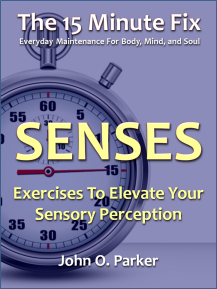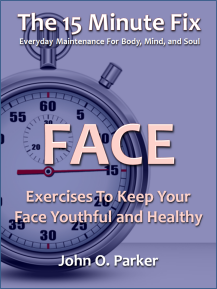
The bulk of the medical community and, to a certain extent, conventional wisdom has preached for decades that eye exercises are ineffectual with nearsightedness (myopia) because the problem is rooted in the fact that the eyeball is the wrong shape and eye exercises can't fix that. Although I am very hesitant to claim otherwise due to the lack of rigorous medical studies supporting it, I have put forth numerous times that the arguments against the effectiveness of eye exercises in combating nearsightedness seem to ignore some of the data out there.
From The 15 Minute Fix: VISION:
There is strong evidence that nearsightedness is largely caused by our environment. Statistics indicate that 100 years ago, around 5% of the U.S. population suffered from myopia (nearsightedness), while today nearly a third of the U.S. population is nearsighted. It stands to reason that the ability to read well into the night, the shift from outdoor jobs to factory jobs to desk jobs, and the introduction of computers are likely reasons for the degeneration of modern eyeballs. Therefore, it stands to reason, that if our environment is causing the damage, then we can take steps to stop or even repair the damage.
This is why I found this article "Is Nearsightedness An Epidemic?" in U.S. News and World Report so interesting. Research by Christine Wildsoet, professor of vision science and optometry at the University of California–Berkeley, found that:
In the early 1970s, about 25 percent of 12- to 54-year-old Americans were myopic. By the 2000s, more than 41 percent had the condition..... Other countries, particularly those in East Asia where schooling starts earlier and lasts longer each day, have beat us to the chase..... In Taiwan, the myopia prevalence among 7-year-olds increased from 5.8 percent in 1983 to 21 percent in 2000. And in South Korea, a large, representative study of 19-year-olds showed that more than 96 percent were myopic in 2010.
So does the research indicate that anything can be done about it?
Australia is one country that’s traditionally lagged behind in myopia progression trends. That’s likely due in part to the down-under lifestyle and landscape that promotes time outdoors, says Wildsoet..... Research has linked more time outdoors with decreased risk of myopia progression, even when controlling for the amount of time indoors and reading.
This sounds an awful lot like engaging in eye exercises.
The article also suggests doing 20-20-20, the second exercise in The 15 Minute Fix: VISION. A couple of the other suggestions seem to have come straight from the book as well: eat a nutritious diet with lots of eye healthy foods and taking steps to avoid Computer Vision Syndrome.
This article and the research behind it lead me to further question the claim that eye exercises can do nothing to prevent nor improve myopia. The evidence clearly supports the view that many cases of myopia are brought on by lifestyle and environment. Given that, there are steps that can be taken to avoid the damage caused by these factors and possibly even reverse damage done. Some might say that taking breaks and getting outside don't qualify as eye exercises. I disagree - getting outside has always been a form of exercise. However, we often engage in more structured exercise (going to the gym, running, cross-fit, etc.) because adding structure to our exercise allows us to improve ourselves in less time and in a more focused manner.
It's no different with eye exercises. If you can consistently get outside and continue to use your eyes in a dynamic, varied way every day (this includes actively using near vision, distance vision, peripheral vision, depth perception and tracking), then you probably don't need eye exercises. But for those of you who have lives that make this difficult, eye exercises are a great substitute - just as the gym can be for physical fitness.
I am optimistic that research like this will get the ball rolling on more serious long term research on how dynamic eye usage (sometimes known as eye exercises) can delay, prevent, or even lessen nearsightedness.
Age well my friends....
From The 15 Minute Fix: VISION:
There is strong evidence that nearsightedness is largely caused by our environment. Statistics indicate that 100 years ago, around 5% of the U.S. population suffered from myopia (nearsightedness), while today nearly a third of the U.S. population is nearsighted. It stands to reason that the ability to read well into the night, the shift from outdoor jobs to factory jobs to desk jobs, and the introduction of computers are likely reasons for the degeneration of modern eyeballs. Therefore, it stands to reason, that if our environment is causing the damage, then we can take steps to stop or even repair the damage.
This is why I found this article "Is Nearsightedness An Epidemic?" in U.S. News and World Report so interesting. Research by Christine Wildsoet, professor of vision science and optometry at the University of California–Berkeley, found that:
In the early 1970s, about 25 percent of 12- to 54-year-old Americans were myopic. By the 2000s, more than 41 percent had the condition..... Other countries, particularly those in East Asia where schooling starts earlier and lasts longer each day, have beat us to the chase..... In Taiwan, the myopia prevalence among 7-year-olds increased from 5.8 percent in 1983 to 21 percent in 2000. And in South Korea, a large, representative study of 19-year-olds showed that more than 96 percent were myopic in 2010.
So does the research indicate that anything can be done about it?
Australia is one country that’s traditionally lagged behind in myopia progression trends. That’s likely due in part to the down-under lifestyle and landscape that promotes time outdoors, says Wildsoet..... Research has linked more time outdoors with decreased risk of myopia progression, even when controlling for the amount of time indoors and reading.
This sounds an awful lot like engaging in eye exercises.
The article also suggests doing 20-20-20, the second exercise in The 15 Minute Fix: VISION. A couple of the other suggestions seem to have come straight from the book as well: eat a nutritious diet with lots of eye healthy foods and taking steps to avoid Computer Vision Syndrome.
This article and the research behind it lead me to further question the claim that eye exercises can do nothing to prevent nor improve myopia. The evidence clearly supports the view that many cases of myopia are brought on by lifestyle and environment. Given that, there are steps that can be taken to avoid the damage caused by these factors and possibly even reverse damage done. Some might say that taking breaks and getting outside don't qualify as eye exercises. I disagree - getting outside has always been a form of exercise. However, we often engage in more structured exercise (going to the gym, running, cross-fit, etc.) because adding structure to our exercise allows us to improve ourselves in less time and in a more focused manner.
It's no different with eye exercises. If you can consistently get outside and continue to use your eyes in a dynamic, varied way every day (this includes actively using near vision, distance vision, peripheral vision, depth perception and tracking), then you probably don't need eye exercises. But for those of you who have lives that make this difficult, eye exercises are a great substitute - just as the gym can be for physical fitness.
I am optimistic that research like this will get the ball rolling on more serious long term research on how dynamic eye usage (sometimes known as eye exercises) can delay, prevent, or even lessen nearsightedness.
Age well my friends....




